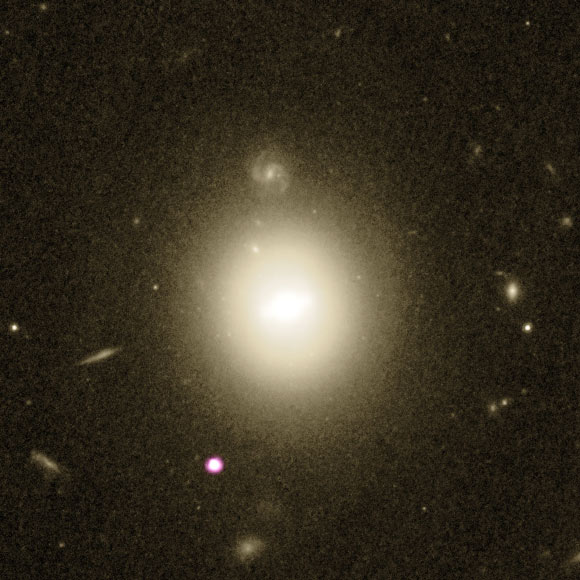Astronomers know that small black holes — objects ranging from 10 times to 100 times the Sun’s mass — are the remnants of dying stars, and that supermassive black holes, more than 100,000 times the mass of the Sun, inhabit the centers of most galaxies. But scattered across the Universe are a few apparent black holes of a more mysterious type. Ranging from 100 to 100,000 solar masses, these intermediate-mass black holes (IMBHs) are so hard to measure that even their existence is sometimes disputed. New research shows the strongest evidence to date that IMBHs exist, by serendipitously capturing one in action shredding a nearby star.
“We feel very lucky to have spotted this object with a significant amount of high quality data, which helps pinpoint the mass of the black hole and understand the nature of this spectacular event,” said lead author Dr. Dacheng Lin, from the Space Science Center at the University of New Hampshire.
“Earlier research, including our own work, saw similar events, but they were either caught too late or were too far away.”
In the new study, Dr. Lin and colleagues used ESA’s XMM-Newton, NASA’s Chandra X-ray Observatory and Swift satellite to detect for the first time this significant telltale sign of activity.
The astronomers found an enormous multiwavelength radiation flare from a massive star cluster in the outskirts of 6dFGS gJ215022.2-055059 (J2150-0550 for short), a barred lenticular galaxy located about 700 million light-years away from Earth.
The brightness of the flare decayed over time exactly as expected by a star disrupting, or being devoured, by the black hole.
“The characteristic of a long flare offers evidence of a star being torn apart and is known as a tidal disruption event (TDE),” the scientists said.
“Tidal forces, due to the intense gravity from the black hole, can destroy a star that wanders too close.”
“During a TDE, some of the stellar debris is flung outward at high speeds, while the rest falls toward the black hole. As it travels inward, and is ingested by the black hole, the material heats up to millions of degrees and generates a distinct X-ray flare.”
“These types of flares can easily reach the maximum luminosity and are one of the most effective way to detect IMBHs.”

This image shows data from the NASA/ESA Hubble Space Telescope (yellow-white) and NASA’s Chandra X-ray Observatory (purple); the purple-white source in the lower left shows X-ray emission from the remains of a star that was ripped apart as it fell towards an intermediate mass black hole; the host galaxy of the black hole is located in the middle of the image. Image credit: X-ray – NASA / CXC / UNH / D. Lin et al; optical – NASA / ESA / STScI.
In the case of J2150-0550, the star was disrupted in 2003 and the radiation it created decayed over the next decade.
The distribution of emitted photons over the energy depends on the size of the black hole. These data provide one of the very few robust ways to weight, or determine the size of, the black hole.
The researchers estimate that the black hole in a massive star cluster in J2150-0550 has a mass between about 50,000 and 100,000 solar masses.
“From the theory of galaxy formation, we expect a lot of wandering IMBHs in star clusters,” Dr. Lin said.
“But there are very, very few that we know of, because they are normally unbelievably quiet and very hard to detect and energy bursts from encountering stars being shredded happen so rarely.”
“Because of the very low occurrence rate of such star-triggered outbursts for an IMBH, we believe that our discovery implies that there could be many IMBHs lurking in a dormant state in galaxy peripheries across the local Universe.”
The research is published in the journal Nature Astronomy.
_____
Dacheng Lin et al. A luminous X-ray outburst from an intermediate-mass black hole in an off-centre star cluster. Nature Astronomy, published online June 18, 2018; doi: 10.1038/s41550-018-0493-1








